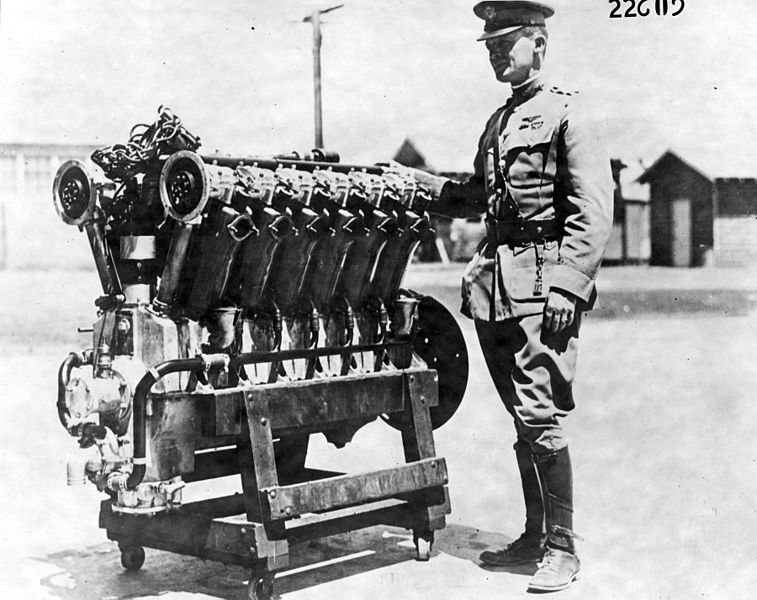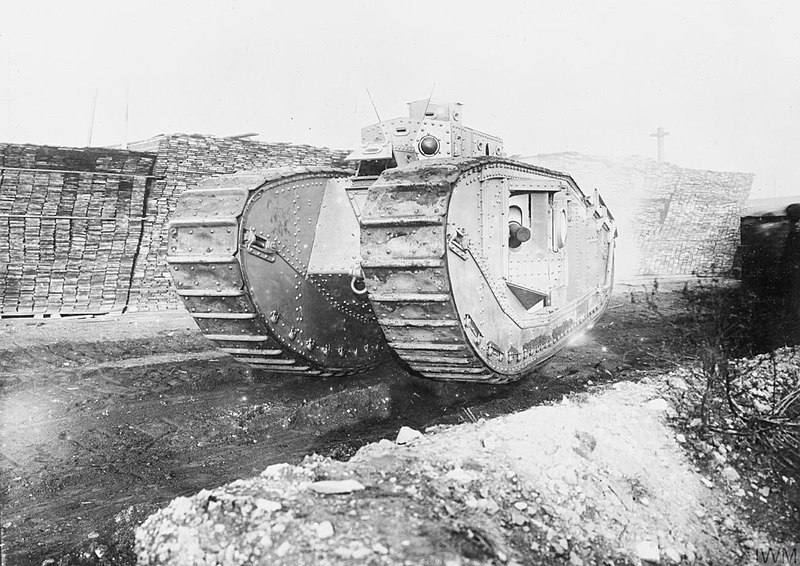| Golden Journal No. 29:
The AEF’s Liberty Tank
by Mike Bennighof, Ph.D.
December 2022
 For their heavy tanks, the Americans chose what was then the most capable design available – even if it did not exist at the time of their choice. Sir Albert Gerald Stern, who oversaw British tank development, had worked with Sir Eustace Tennyson d’Eyncourt, the Director of Naval Construction, on the design of early British tanks. He turned to his old colleague to turn his lie into truth. For their heavy tanks, the Americans chose what was then the most capable design available – even if it did not exist at the time of their choice. Sir Albert Gerald Stern, who oversaw British tank development, had worked with Sir Eustace Tennyson d’Eyncourt, the Director of Naval Construction, on the design of early British tanks. He turned to his old colleague to turn his lie into truth.
Sir Eustace had overseen the design of British tanks. His ship designs included the battleship Agincourt and battle cruiser Hood, and he would direct what became the Mark VIII Liberty tank project. The Americans would produce most of the tank’s components, with the British responsible for the armor, armament (including ammunition) and the track rollers. Final assembly would take place at a brand-new factory in France. At first called the “International,” in November 1917 the tank would be re-named “Liberty” in honor of its engine.
The tank would be built around its power plant. In May 1917, right after the American declaration of war, the federal government set up an Aircraft Production Board to mobilize American productive power to pump out thousands of planes. Toward that end, the Board wanted a standardized engine, one specifically designed to use the latest mass production techniques.
The Board brought two leading designers to Washington and locked them in a hotel until they had designed a 12-cylinder engine to meet their specifications. The design was ready in five days and the prototype had been built by July. A snag developed when General Motors founder Billy Durant refused to accept military contracts, not wishing his works to be used in the killing of other men. Another snag centered on difficulties with the pistons. Large scale production finally began in late 1918.

Major Henry “Hap” Arnold poses with the first production Liberty engine.
The Liberty engine would be used in many airplanes, in blimps, and in the Mark VIII tank. The version developed for the tank would be less expensive than the aircraft engine, using cast-iron cylinders rather than drawn steel and developing 300 horsepower compared to 400 for the aircraft version. British-made tanks would have a British-made engine in its place.
That would give the 38-ton tank a top speed of 8 kilometers per hour (five miles per hour). It only crawled that fast (somewhat slower than a fully-loaded infantryman running after it) thanks to painfully thin armor: 16mm on the front and sides, 6mm on the top and bottom (making it vulnerable not only to landmines, but to mortar shells as well).

No, not a Warhammer hallucination. A Mark VIII Liberty tank.
Designed to cross enemy trenches, the Mark VIII was a very long tank, stretching over 10 meters. That in turn resulted in a very narrow machine, just 3.5 meters in width. That made for a very narrow fighting compartment, with a gap between the tank’s body and its huge, overhead tracks. The Liberty proved very difficult to steer thanks to its long, skinny shape, since it could only be turned by moving one track faster than the other. The tracks proved a major weak point, often twisting and breaking during a turn. They would eventually be replaced by new track links made of hardened armor plate.
At least it had plenty of firepower: two 6-pounder (57mm) guns, mounted in sponsons projecting from either side of the tank. The 6-pounder was a Hotchkiss design introduced in 1885 as a naval gun, and shortened for use in tanks. To make the tank even narrower, the armored sponsons could be swung back inside the fighting compartment. A machine gun fired through a ball mount fixed to the door in each side, and five were mounted in the superstructure that sat atop the hull. That left a dead angle directly behind the tank where enemy foot soldiers could sneak up on the tank, so a deflector plate allowed the rear gunner to shoot at them with ricochets. The deflector plate would appear again on American tanks designed during the 1930’s; it didn’t work.
The fighting compartment sat atop the ammunition locker, which must have been re-assuring to the crew. An innovation placed a bulkhead between the fighting compartment and the engine compartment, making the Liberty slightly less deafening to operate than other tanks of the period.
The Liberty had a crew of a dozen men: a commander, a driver, seven machine gunners and two gunners for each 57mm gun. A mechanic rode in the engine compartment, sitting alongside the clanging engine and likely driven mad by the echoing roar. Somehow the long, skinny tank was also supposed to carry 20 fully-armed infantrymen in its fighting compartment and act as an armored personnel carrier as well.
The tank’s Liberty engine proved balky and unreliable, emitting far more fumes than expected. To help make the fighting compartment slightly more habitable, the Americans would eventually remove the two door-mounted machine guns and reduce the crew from 12 to 10 men.

Yes, 32 men were supposed to fit in there.
As delays plagued the new French assembly plant, production shifted to North British Locomotive, which delivered a production prototype on Armistice Day with an unarmored body and a Rolls-Royce engine. Seven more production versions with armor and the intended Riccardo engine were completed later, and another two dozen eventually assembled from spare parts. The U.S. Army ordered 100 of the tanks from Rock Island Arsenal and took delivery in 1919 and 1920.
No Liberty tank saw combat; the American heavy tank battalion that fought in October and November 1918 used British-supplied Mark V heavy tanks. The Rock Island-built Liberties soldiered on through the 1920’s with the 67th Infantry Regiment (Medium Tanks) until their retirements between 1932 and 1934, when they went into storage at Fort Meade, Maryland. In 1940 the U.S. Army tried to sell them to Canada, without success, and ordered them scrapped. A tiny handful remain as museum pieces.
Our Golden Journal No. 29: Ancient Armor gives these doughty warriors the chance to smite America’s enemies. Instead of meeting cutting torches, they return to the Arsenal of their birth to receive new engines (probably the 350-horsepower Wright R975, introduced in 1929 and powering the Lee and Sherman medium tanks and Hellcat tank destroyer, among others). They would also need repairs to their transmissions, suspensions and most of all to their huge tracks. Some added armor would also be a vital addition. The short-barreled 57mm guns could not be replaced with the new, long-barreled M1 57mm anti-tank gun; the sponson mount required a short barrel on the weapon. The cost of all that work is of course the reason they were sliced up and melted down instead.
Refurbished for a new war (their first war), they head to Ireland in 1940 to take on the Germans, and Guam in 1941 to take on the Japanese. You’ll need Panzer Grenadier: Road to Dunkirk and Saipan 1944 to play with your new old tanks.
Click here to join the Gold Club.
See your Gold Club Insider newsletter for ordering information.
Sign up for our newsletter right here. Your info will never be sold or transferred; we'll just use it to update you on new games and new offers.
Mike Bennighof is president of Avalanche Press and holds a doctorate in history from Emory University. A Fulbright Scholar and NASA Journalist in Space finalist, he has published a great many books, games and articles on historical subjects; people are saying that some of them are actually good.
He lives in Birmingham, Alabama with his wife and three children. He will never forget his Iron Dog, Leopold.
Want to keep Daily Content free of third-party ads? You can send us some love (and cash) through this link right here.
|
